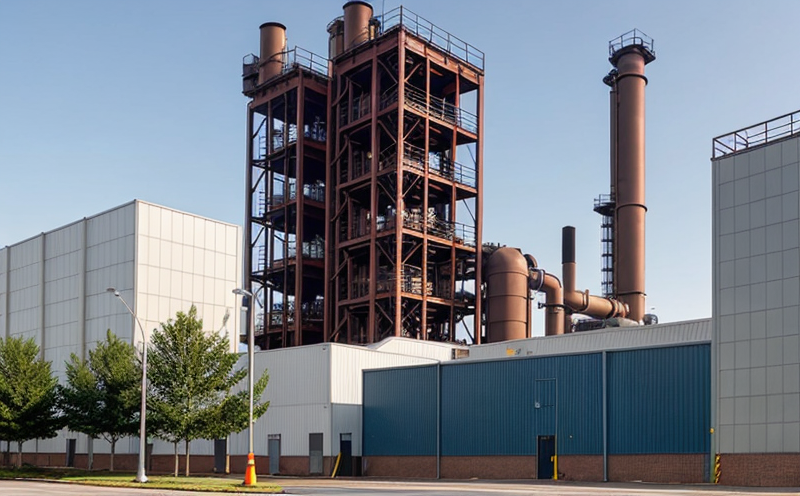ISO 10218 Industrial Robot Safety Compliance Testing
The ISO 10218 standard series is a cornerstone in ensuring the safe integration and operation of industrial robots within manufacturing environments. This certification is crucial for manufacturers, as it guarantees that robotic systems meet stringent safety requirements set by international standards.
ISO 10218 comprises two parts: ISO 10218-1 deals with safety aspects of industrial robot systems and their components, while ISO 10218-2 focuses on the safety of industrial robots in relation to human workers. Compliance testing under these standards ensures that robotic systems are designed, manufactured, and maintained in a manner that minimizes risks associated with their use.
Our comprehensive ISO 10218 compliance testing service encompasses both parts of this standard, providing manufacturers with the assurance they need to meet regulatory requirements. By working closely with our team, you can ensure your industrial robots are not only safe but also fully compliant with global standards.
The process involves several key steps: initial risk assessment, robotic system design evaluation, simulation tests, and finally, on-site verification testing. Each step is meticulously planned to cover all potential safety hazards associated with the robot's operation. This approach ensures that no aspect of the system's functionality is overlooked in terms of its impact on human safety.
Our team employs advanced instrumentation to simulate various operational scenarios under controlled conditions, mimicking real-world situations as closely as possible. This allows us to identify and address any potential issues before deployment. Once testing is completed, we provide detailed reports that outline all findings, recommendations for improvements, and certification status.
Compliance with ISO 10218 not only enhances the reputation of your company but also safeguards against liability risks associated with accidents involving industrial robots. It demonstrates a commitment to excellence in safety practices, which is increasingly important as automation continues to grow across industries.
In summary, our ISO 10218 compliance testing service offers more than just technical expertise; it provides peace of mind knowing that your robotic systems are meeting the highest international standards. By partnering with us, you can ensure smooth integration into existing operations while minimizing potential risks for both personnel and equipment.
For manufacturers looking to stay ahead in today’s competitive market, compliance testing under ISO 10218 is essential. It ensures that your robotic systems are safe, reliable, and fully compliant with global standards, thereby reducing the risk of accidents and enhancing overall productivity.
Benefits
- Maintains compliance with international safety standards
- Reduces liability risks associated with robotic systems
- Enhances reputation and trust among stakeholders
- Facilitates smoother integration into existing operations
- Promotes safer work environments for human operators
- Ensures robust performance of industrial robots under various conditions
Industry Applications
The application of ISO 10218 compliance testing is wide-ranging across multiple sectors. In automotive manufacturing, for instance, the safety and reliability of robotic systems are paramount to ensure efficient production lines without compromising worker safety. Similarly, in electronics manufacturing, precision and repeatability are critical, making ISO 10218 a vital standard.
In the aerospace industry, where quality and safety standards are extremely high, ISO 10218 ensures that robotic systems used for assembly or inspection meet stringent requirements. Pharmaceutical manufacturing also relies heavily on robotics due to strict regulatory environments, requiring rigorous testing to ensure product integrity.
Moreover, in food processing facilities, the use of industrial robots is increasing rapidly as they help automate repetitive tasks and improve hygiene levels. ISO 10218 compliance testing ensures these systems operate safely within confined spaces without compromising food safety standards.
The diverse applications highlight the importance of adhering to this standard across various industries. By ensuring that robotic systems are safe, reliable, and compliant with international regulations, companies can enhance their competitive edge while maintaining high levels of quality and safety.
Why Choose This Test
Selecting ISO 10218 compliance testing for your industrial robots is a strategic decision that offers numerous advantages. Firstly, it ensures that your robotic systems meet the rigorous safety standards set by international bodies like ISO and IEC. This not only protects your company from potential legal challenges but also enhances your reputation as a leader in safety-conscious manufacturing practices.
Secondly, compliance testing helps identify and rectify any design flaws or operational issues early on, preventing costly delays during production phases. Our team uses state-of-the-art technology to simulate real-world scenarios, allowing us to pinpoint potential hazards accurately. This proactive approach ensures that your robotic systems are not only safe but also optimized for efficiency.
Moreover, adhering to ISO 10218 standards fosters a culture of continuous improvement within your organization. By regularly assessing and updating safety protocols based on these guidelines, you can stay ahead in the rapidly evolving field of industrial automation. This commitment to excellence sets you apart from competitors who may not prioritize such stringent safety measures.
Finally, compliance with ISO 10218 is a prerequisite for many certifications and registrations required by government agencies and industry associations worldwide. Demonstrating adherence to these standards can significantly simplify the certification process and expedite market entry into new regions or sectors.
In conclusion, choosing ISO 10218 compliance testing demonstrates your company’s dedication to safety, reliability, and regulatory compliance. It provides a solid foundation for building trust with customers, suppliers, and regulators alike, ultimately leading to greater business success in today’s competitive landscape.





